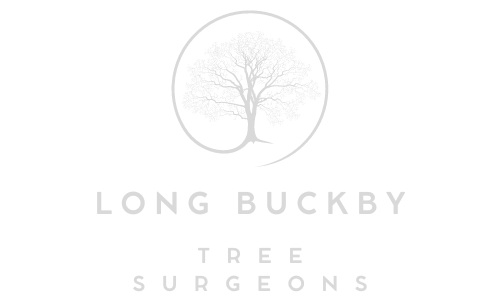12 Tree Hazards Commonly Missed by Homeowners
Introduction
Trees add beauty, value and environmental benefit to properties across Long Buckby and the wider Northamptonshire area. But while they may seem sturdy and self-sufficient, trees require attention and maintenance to stay safe—particularly when they grow close to homes, roads or public areas.
At Long Buckby Tree Surgeons, we regularly spot tree hazards that most homeowners don’t even realise are a problem—until it’s too late. Whether due to inexperience, busy schedules, or simply not knowing what to look for, hidden risks can cause serious damage or safety concerns if ignored. Below, we’ve outlined 12 common tree hazards that often go unnoticed, but can be easily spotted and resolved with expert care.
1. Deadwood Hidden in the Canopy
Dead branches may still appear intact but are brittle and likely to fall during storms or high winds. These can cause damage to cars, roofs, fences or harm people below.
2. Cracks in the Trunk
Even minor splits in the trunk can indicate internal decay or structural failure. These cracks can worsen over time and are often a warning sign of a failing tree.
3. Branches Rubbing Together
Where limbs cross and rub, they create wounds that weaken branches and invite pests or disease. This can lead to premature breakage or infection spread.
4. Root Exposure or Damage
Roots that are visible above ground or have been damaged by lawn equipment or foot traffic are more vulnerable to rot. Trees with compromised root systems can become unstable without warning.
5. Fungal Growth at the Base
Mushrooms or bracket fungi at the tree base often signal internal decay or dead wood. This is a sign that the tree’s structure may be compromised from the inside.
6. Leaning Trees with Shallow Roots
A slight lean can be natural, but a tree that suddenly leans or continues to tilt more over time may have unstable roots or shifting soil, especially after heavy rain.
7. Dense or Unbalanced Canopies
An uneven canopy makes a tree more prone to windthrow (being blown over). If one side is heavier or denser than the other, it can stress the tree and affect its stability.
8. Cankers or Wounds on the Bark
Sunken, discoloured or peeling bark could indicate the tree is diseased. Left untreated, this can progress to dieback or widespread decay.
9. Epicormic Growth (Excess Shoots)
Sudden spurts of new growth, especially low on the trunk or after pruning, can be a sign of stress. It often means the tree is reacting to internal weakness or damage.
10. Trees Growing Close to Structures
Roots and branches that encroach on homes, walls, fences or driveways can cause cracks, dislodge tiles, and create damp issues. This often happens slowly and goes unnoticed until damage is done.
11. Poor Pruning in the Past
Improper cuts, topped trees or stubby limbs weaken the tree’s structure and invite rot or insect infestation. These mistakes may not show consequences until years later.
12. Pests and Infestation
Signs like small holes in bark, leaf discolouration or sawdust around the base can indicate a pest problem. Left unmanaged, infestations can kill even mature trees over time.
Why These Hazards Matter
Missed tree hazards can lead to:
- Unexpected storm damage
- Injury to people or pets
- Insurance complications
- Expensive emergency removals
- Decreased property value
Conclusion
While trees may look strong and timeless, they are vulnerable to damage, disease, and decay—especially if warning signs go unnoticed. By catching these 12 hazards early, you can avoid costly damage, ensure the safety of your outdoor space, and protect the long-term health of your trees.
At Long Buckby Tree Surgeons, we know what to look for—and how to act quickly and professionally. If you’re unsure about the condition of the trees around your home, get in touch with our experienced team today. A simple inspection now could save you thousands later.
Call us on: 01327 225 193
Click here to find out more about Long Buckby Tree Surgeons
Click here to complete our contact form and see how we can help with your tree needs.

